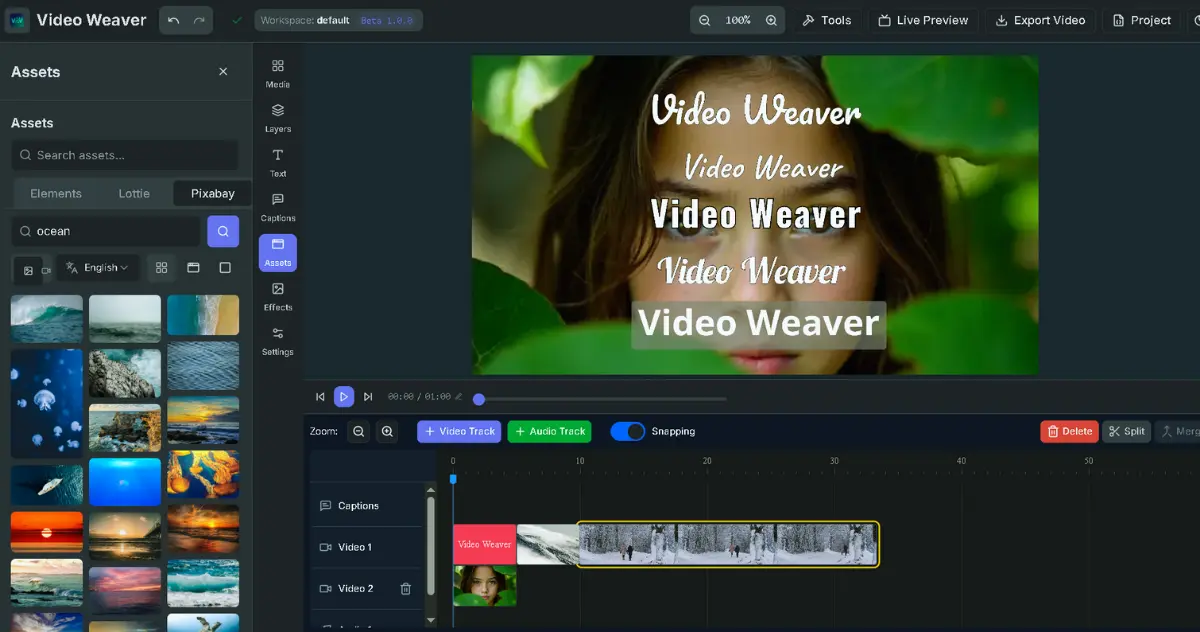MiniCPM-V 4.5 is here: an 8 billion parameter model, does its vision really surpass GPT-4o?
The AI world has another big news! OpenBMB has released MiniCPM-V 4.5, a visual language model with only 8 billion parameters, and claims that it has beaten industry giants such as GPT-4o and Gemini Pro in a number of visual benchmark tests. Is this a gimmick or the real deal? This article will take you through an in-depth analysis of this model’s amazing capabilities, the technology behind it, and its profound impact on the open source community.
The AI competition is heating up again, can a small model challenge the giants?
Recently, the pace of artificial intelligence development has been almost breathtaking. Just as everyone was still marveling at the powerful capabilities of large models like GPT-4o and Gemini, a “little guy” named MiniCPM-V 4.5 quietly took the stage and directly challenged these industry giants.
You heard that right, this latest model from the open source community OpenBMB, with only 8 billion (8B) parameters, dares to claim that its comprehensive visual language capabilities surpass those of heavyweights like GPT-4o and Qwen2.5-VL (72B). This sounds a bit incredible, right? How can a model with a parameter size nearly 10 times smaller achieve this kind of leapfrogging challenge? Let’s take a look at what it’s really capable of.
The numbers speak for themselves: performance evaluation tells the true story
Empty words are no proof, data is the most powerful evidence. On OpenCompass, the authoritative evaluation set for measuring the comprehensive capabilities of multimodal models, MiniCPM-V 4.5 achieved an amazing average score of 77.2.
What does this score mean? It means that it not only surpasses previous generation models, but also outperforms currently widely used proprietary models such as GPT-4o and Gemini Pro on multiple key indicators. Among models with less than 30 billion parameters, it is undoubtedly the most powerful at present. The evaluation data shows that MiniCPM-V 4.5 has demonstrated extremely strong competitiveness in multiple dimensions.
Honestly, when a lightweight contender shows strength that rivals or even surpasses that of a heavyweight champion on the field, it’s hard not to be impressed.
Not just seeing, but “seeing through”: an analysis of three core highlights
Just looking at the scores may still be a bit abstract. The power of MiniCPM-V 4.5 is not just on paper, but is reflected in various specific application scenarios.
1. The “X-ray eyes” of the AI world: top-tier OCR and document analysis
Have you ever been frustrated by blurry, awkwardly angled text in images, or messy handwritten notes? MiniCPM-V 4.5 is an expert in this area.
Thanks to the LLaVA-UHD architecture, it can process ultra-high-resolution images of up to 1.8 million pixels, and uses 4 times fewer visual tokens (which can be understood as the computing units the model uses to process images) than most models. The benefits of this are twofold: it improves efficiency and ensures accuracy.
Imagine that even when faced with a meeting record full of dense, messy handwriting, MiniCPM-V 4.5 can accurately convert it into digital text. In the authoritative OCRBench test, its performance even surpassed that of GPT-4o, which has huge application potential in fields such as document digitization and intelligent form filling.
2. Mastering the dynamic world: efficient long video understanding capabilities
In the past, getting AI to understand video was a very resource-intensive task. If the video to be processed was a little longer or of higher quality, the computing cost would skyrocket.
MiniCPM-V 4.5 has completely changed this situation with an innovative “unified 3D-Resampler” technology. It can achieve a video token compression rate of up to 96 times - for example, a video clip that other models might need 1536 tokens to process, MiniCPM-V 4.5 only needs 64!
This technological breakthrough allows it to “watch” and understand video at a refresh rate of up to 10FPS (10 frames per second), which is very close to human perception. Whether it’s analyzing long surveillance videos or quickly capturing exciting moments in sports events, it has become easy and extremely efficient.
3. Thinking like a human: controllable “fast thinking” and “slow thinking”
When solving problems, humans sometimes rely on intuition for quick reactions (fast thinking), and sometimes need in-depth analysis and logical reasoning (slow thinking). MiniCPM-V 4.5 cleverly introduces this hybrid thinking model.
It supports a “fast thinking” mode for handling routine, high-frequency tasks to achieve optimal efficiency; it also supports a “deep thinking” mode for solving more complex problems that require multi-step reasoning. What’s even better is that these two modes can be flexibly switched according to the user’s needs, perfectly balancing efficiency and performance.
Seeing is believing: let’s look at its actual performance
After so much theory, let’s look at a few real-life examples to feel its power.
Scenario 1: A lifesaver for those who are bad with directions
Imagine a common driving scenario: you’re driving to an unfamiliar intersection and you’re in a hurry to know how long it will take to get to the next exit. At this point, the model can analyze the photo of the road sign you took, accurately identify all the text information on it (such as “East Perth” and “James St & Wellington St”), and also combine the distance (700 meters) and general urban traffic rules (such as speed limits) to quickly estimate the approximate travel time.
This ability to combine visual recognition with real-world common sense for reasoning is very practical.
Scenario 2: A mobile encyclopedia
What if you’re interested in an exhibit in a museum but can’t understand the description next to it? Just take a picture, and MiniCPM-V 4.5 can become your exclusive guide.
For example, when it analyzes a photo of an Archaeopteryx fossil, it can not only immediately recognize what it is, but also explain its biological significance in a clear and detailed way - for example, that it is a key species connecting dinosaurs and birds, with mixed features such as feathers and claws, and is important evidence for the theory of evolution. This level of professionalism is like having a paleontologist with you at all times.
Accessible to everyone: an open ecosystem and convenient deployment
The greatest strength of MiniCPM-V 4.5 may lie in its openness. The OpenBMB team knows that a good tool must be accessible to everyone to realize its full value.
Therefore, whether you want to run it on your laptop with a CPU (supports llama.cpp and ollama), or need to perform high-throughput inference on a server (supports SGLang and vLLM), it provides a complete solution. In addition, there are various quantized versions (such as int4, GGUF) and convenient fine-tuning tools, and even an iOS App is provided, allowing developers and AI enthusiasts to easily apply it to their own projects.
You can find the model on HuggingFace and view the complete code and usage guide on GitHub.
Conclusion: The future of AI belongs to a more efficient and open community
The emergence of MiniCPM-V 4.5 is not just the release of a new model, it is more like a declaration: the performance of a model does not depend entirely on the accumulation of parameters. Through better architectural design, more efficient training methods, and smarter algorithms, small models can also unleash amazing energy.
It proves to us that the power of the open source community is constantly pushing the boundaries of AI technology, so that cutting-edge technology is no longer the patent of a few technology giants. For the majority of developers and small and medium-sized enterprises, this is undoubtedly exciting news. A more open, more efficient, and more popular AI era may have quietly arrived.
Frequently Asked Questions (FAQ)
Q1: What are the main advantages of MiniCPM-V 4.5 compared to GPT-4o?
A1: The main advantages of MiniCPM-V 4.5 are its extremely high efficiency and excellent performance in specific fields. With only 8 billion parameters, it has achieved a level comparable to or even surpassing GPT-4o on multiple visual language benchmark tests (such as OCR, document analysis, and anti-hallucination tests). This means that it can complete the same excellent tasks with lower computing costs and hardware requirements.
Q2: Is this model free and open source?
A2: Yes, MiniCPM-V 4.5 is an open source model. You can freely download, use, and study it on platforms such as GitHub and HuggingFace, which is very friendly for academic research and commercial application exploration.
Q3: How powerful of a hardware do I need to run MiniCPM-V 4.5 locally?
A3: Due to its lightweight design and the provision of multiple quantized versions, the running threshold of MiniCPM-V 4.5 is relatively low. It supports inference on mainstream personal computer CPUs through tools such as ollama and llama.cpp. Of course, if you have an NVIDIA graphics card that supports CUDA, you can get a smoother experience.
Q4: Does MiniCPM-V 4.5 support Chinese?
A4: Absolutely. According to the official data, the model supports more than 30 languages, including powerful Chinese processing capabilities, with excellent performance in both text recognition and natural language understanding.




